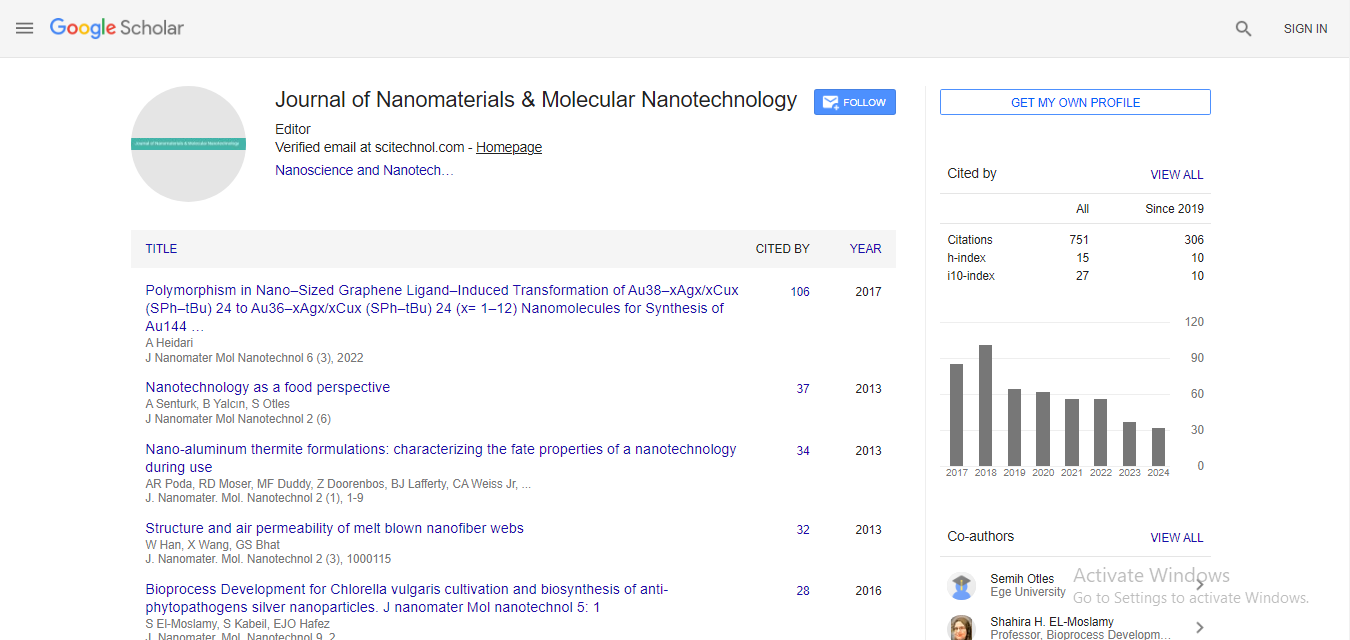Quantum cone - nano source of light with dispersive spectrum, separated in time and space
Arturs Medvids
Riga Technical University, Latvia
: J Nanomater Mol Nanotechnol
Abstract
Nanostructures (NSs) are the most investigated object in solid-state physics, especially the Quantum confinement effect in quantum dots – 0D, quantum wires - 1D, and quantum wells – 2D systems. Because at these conditions constructing new electronic and optical devices is possible. Twenty years ago have found a new quantum system, so-called Quantum cone in Ge single crystal [1, 2] possesses unique optical properties: huge “blue shift” of photoluminescence (PL) spectrum on 1.1 eV with increased intensity more than a million times, with period 1 μ of pattern C6i point groop symmetry and “redshift” of LO phonon line frequency on 6 cm-1 in Raman spectrum. The symmetry of PL band and sharp LO phonon line in Raman spectrum is evidence present of OD quantum cone. The appearance of a new band in the PL spectrum of CdZnTe slid solution is explained by the exciton quantum confinement effect in quantum cones [3]. Irradiation of SiO2/ Si structure by Nd:YAG laser as led to the formation of nanocones which possesses unique PL spectrum: “blue shift” on 1.1 eV, an asymmetric wide band from 1.1 eV till 2.2 eV with gradually decreases intensity in the red part of the spectrum, rainbow-like spectrum, and maximum of PL intensity increase more than million times [4]. These properties of the system of PL spectrum are typical for graded bandgap semiconductors. It means that the quantum cone with the solid angle at top of the cone less than 60o is a 1D system with a gradually decreasing diameter from the base to the top of the cone. Therefore, where the cone diameter is equal to or less than Bohr’s radius of an electron or exciton quantum confinement effect takes place [5]. Colossal increase intensity of PL and shift of maximum in the blue part of the spectrum takes place due to transformation of Si and Ge crystal from indirect to quasi direct and confinement of electron-hole pair in the quantum cone. These facts speak in forward to the possibility of a gradual decrease of the lifetime of electron-hole pairs or excitons from base to top of a cone. The aim of this study is to determine the change of electron-hole pairs lifetime depending on height in a cone using the kinetics of the PL method. PL kinetic of diamond-like carbon sample with nanocones diameters on the base 100 nm and top 2 nm and hight 60 nm is investigated. The kinetic is described by stretched exponent Ið??ð¿= I0 exp (−(ð?¡/ð?0)ð?½), where τ0= 5x102 ps, β= 0.5. It means, τ decreases from base to top of cone monotonously from 1 ns to 50 ps.
 Spanish
Spanish  Chinese
Chinese  Russian
Russian  German
German  French
French  Japanese
Japanese  Portuguese
Portuguese  Hindi
Hindi 



